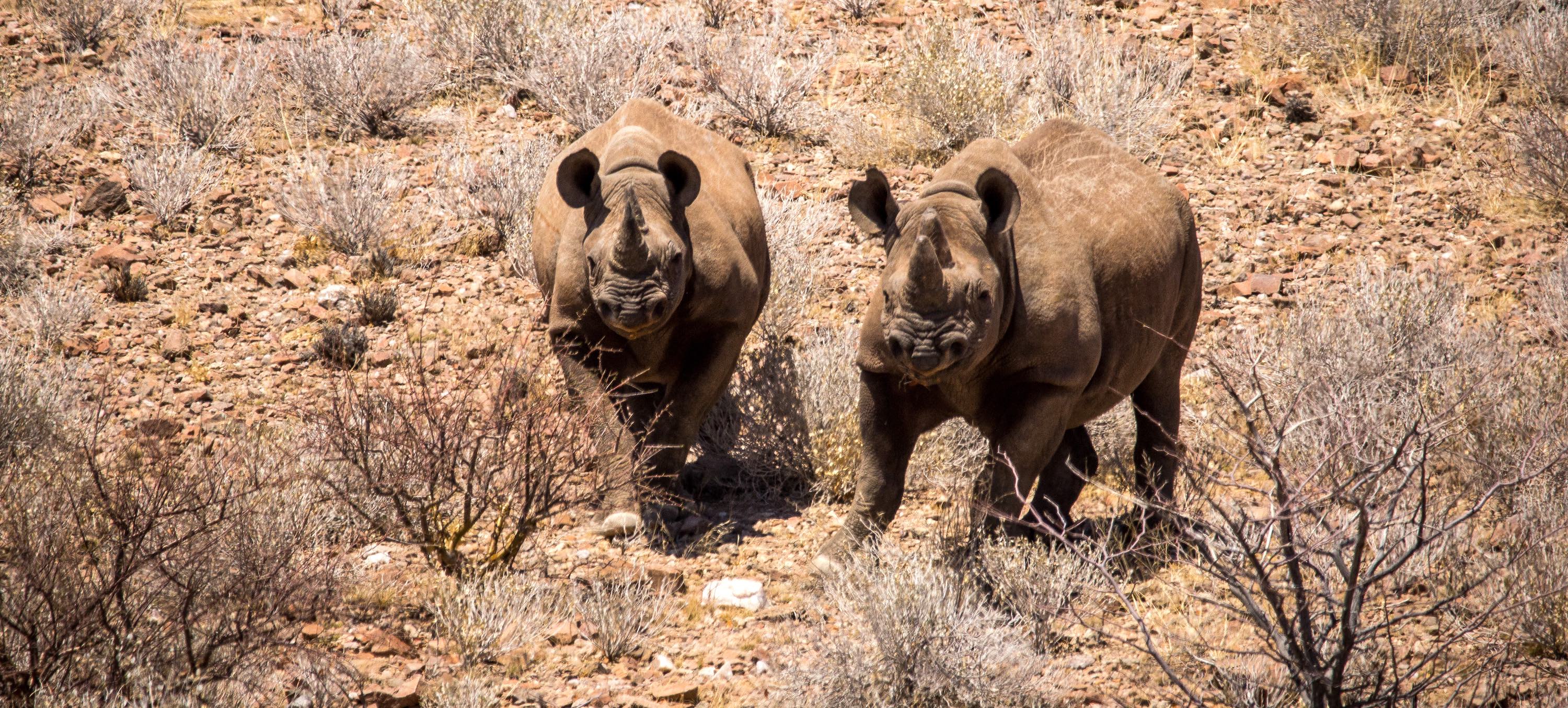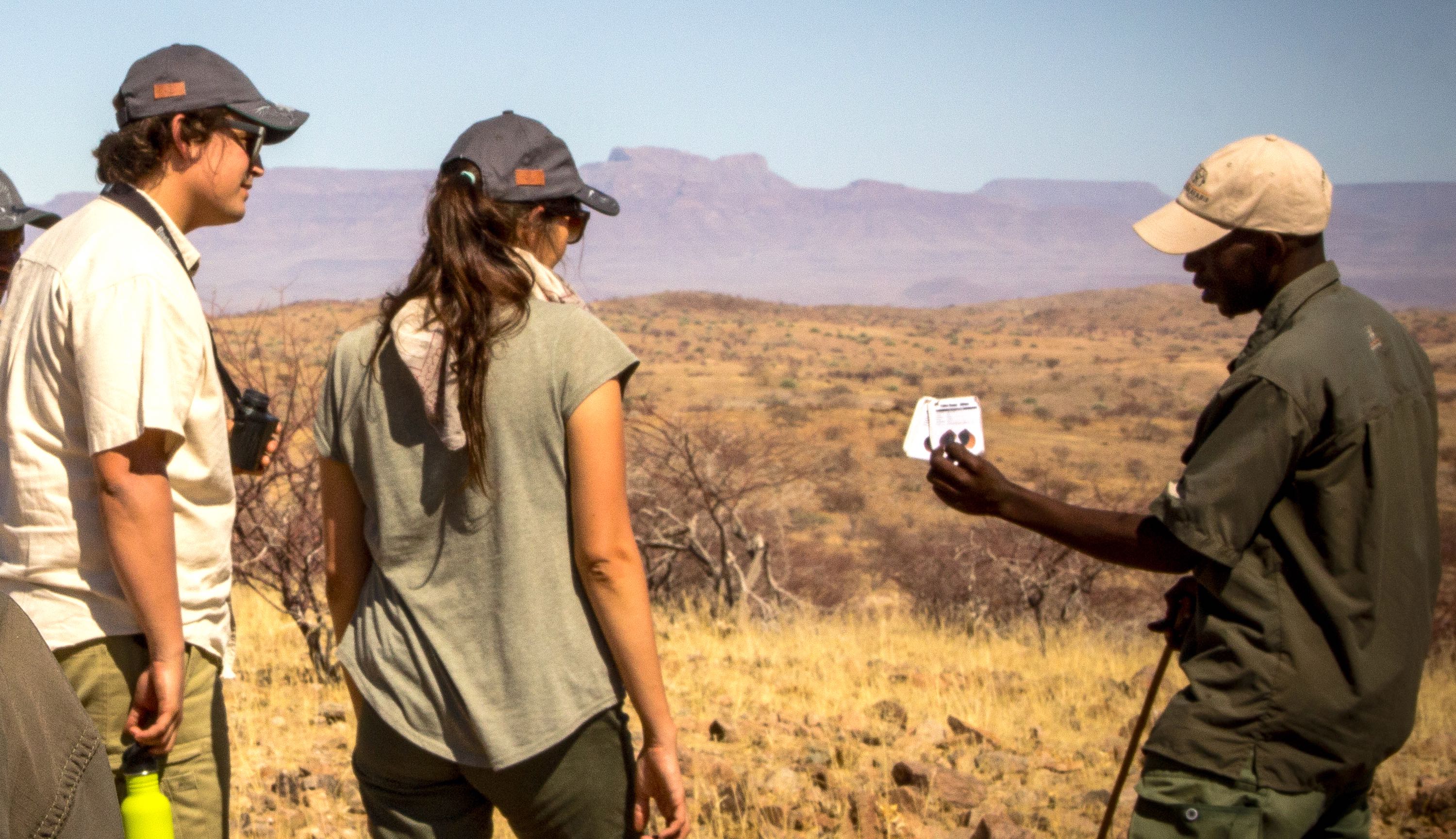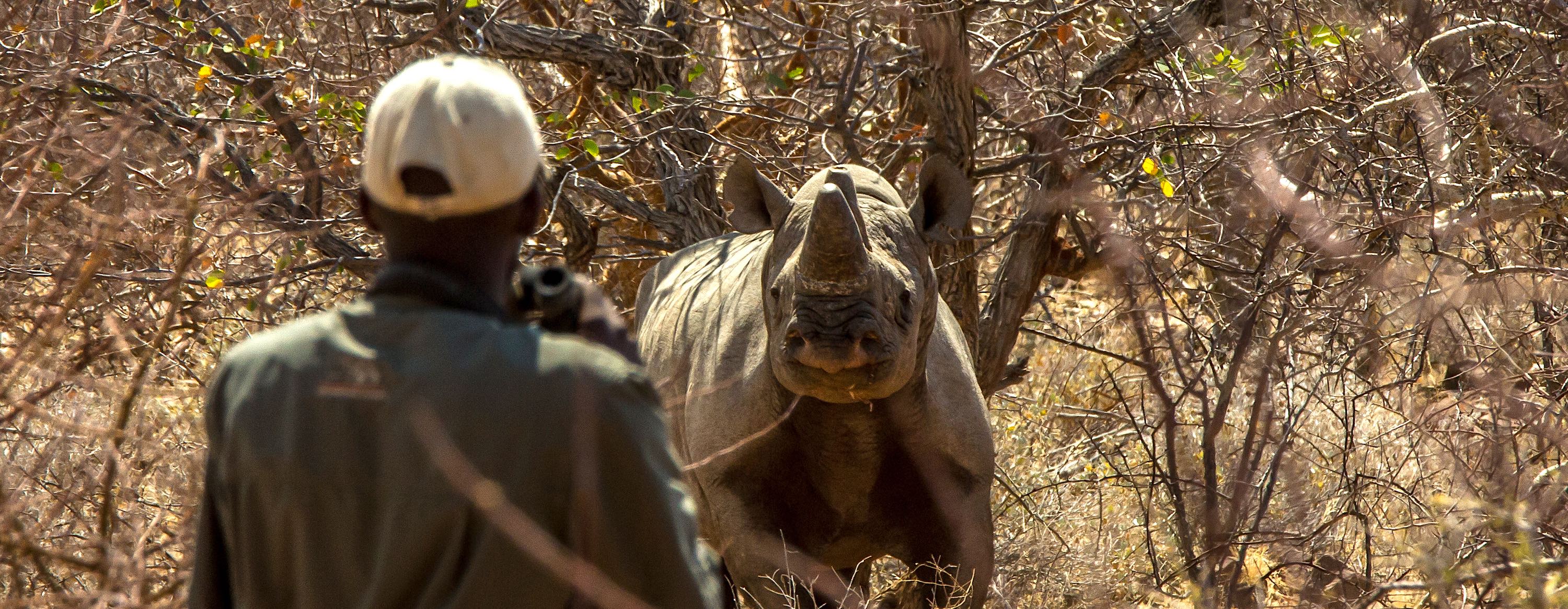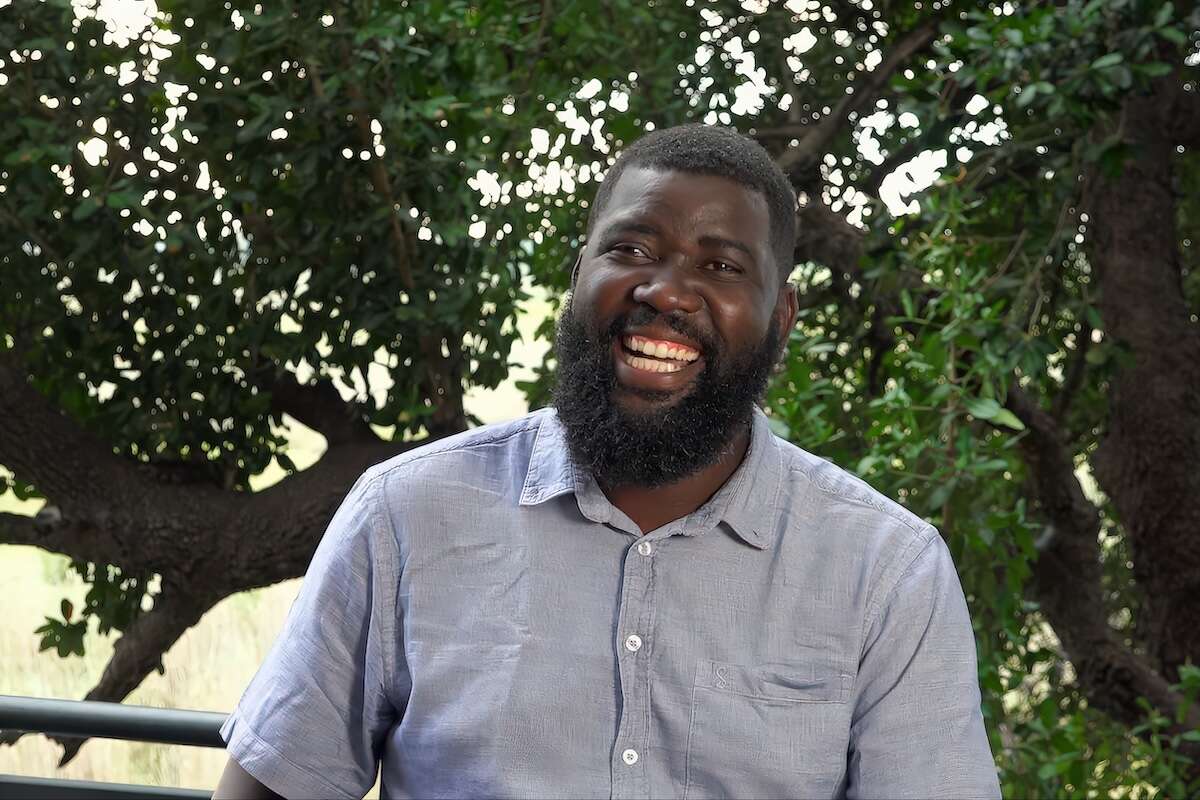
This article is solely the opinion of the author(s) and does not necessarily reflect the position of the Conservation Namibia partners.
Communal conservancies and black rhino custodianship are two of Namibia's flagship conservation programmes that are proudly displayed by the Ministry of Environment, Forestry and Tourism (MEFT). But when //Huab Conservancy, a black rhino custodian, is threatened by a mining project that did not follow due processes in its Environmental Impact Assessment (EIA), Minister Shifeta refuses to act.
In his political statements about why he is a good candidate for to be Vice President of Namibia, Minister Shifeta claims that: My leadership abilities throughout the years have demonstrated that I can do it and I am ready for the challenge.
Yet he has shown no leadership on this matter.
In the absence of ministerial intervention, heavy machinery has started operating on the mining site, staff accommodation is being built and we understand that a blasting license has been issued, causing the rhinos to leave the area and forcing our Joint Venture tourism partner, Ultimate Safaris, to close their lodge, Huab Under Canvas. Our conservancy has therefore lost its main source of income and community members who were employed at the Huab Under Canvas lodge will be retrenched. Huab Under Canvas was the winner of 2018 NACSO Best Conservancy Lodge award as well as the Responsible Tourism Awards, and in 2019 was awarded 5 Green Flowers by the Eco Awards, the highest possible order when it comes to sustainable operations.

Since we started our partnership with Ultimate Safaris in 2016, they have invested nearly N$ 7 million into our conservancy and community projects. We also used tourism as the basis for a N$ 2.5 million grant from the Environmental Investment Fund of Namibia. This investment is obsolete as tourism will be closing. Minister Pohamba's ministry, with significant support from several international donors, reintroduced rhinos to this area as part of a flagship programme some 10 years ago. The members of the //Huab Conservancy and their Rhino Rangers have diligently and successfully monitored and protected these animals. We had great plans for long-term future investments that would create jobs and improve the lives of our people. These plans will come to nothing due to the mining operation, which will last for just a few years.
Regional MEFT officials have recommended that the rhinos be removed from the conservancy, as they are now in danger of being poached. With no rhinos to monitor, our conservancy rhino rangers will also lose their jobs. The mine has effectively destroyed our conservancy.
The mine management and investment is mainly Chinese, while the holder of the mining license is a Mr Gerhardt Kariseb. We demand justice for our people who will lose their livelihoods for a mining operation that will bring few or no local benefits, yet it will damage our landscape and destroy our income from rhino-based and other long-term tourism projects. The members of the //Huab Conservancy view sustainable wildlife-based tourism as a preferred land-use option. We do not want short-term mining on our land that brings no benefits, just destruction.

The negative outcome for the rhinos and the conservancy was predicted in submissions by the MEFT's Directorate of Scientific Services and Save the Rhino Trust (SRT), to the Environmental Commissioner. Subsequently, a computer-based mapping program was used to develop a Spatial Monitoring and Reporting Tool (SMART)
map showing how mining activities had displaced rhinos, using locational data before and after mining started.
The Environmental Assessment Practitioner, Mr David Aiyambo of Healthy Earth Environmental Consultant CC, mentioned the rhinos in the conservancy in his report, but made the ridiculous statement that the mine would have ‘minimal impacts'. Mr Aiyambo provided only two days' notice for a public consultation meeting for this project and did not even invite Ultimate Safaris as a stakeholder. He further ignored verbal and written submissions that raised valid concerns about the impacts of the mining activity. His final reports were therefore incomplete and inaccurate. The SMART map proves that he was profoundly wrong when he asserted that the mining would have only minimal impact.
The Environmental Commissioner, Mr Timoteus Mufeti, ignored both submissions by the Directorate of Scientific Services in his own Ministry and by SRT and turned a blind eye to the gross irregularities in the EIA when he approved the mine's Environmental Clearance Certificate (ECC). In his decision record, Mr Mufeti states: The recommendation from Scientific Services not to grant the ECC was not considered since the potential negative impacts highlighted in his comments were deemed manageable through appropriate mitigation measures proposed in the Environmental Management Plan
. The negative impacts have not been ‘manageable' – the rhinos, local jobs and our conservancy have been imperilled by this groundless, uniformed and reckless decision.

In April 2021, our partner Ultimate Safaris appealed to Minister Shifeta to set aside the Environmental Clearance Certificate, with details about why the EIA is unacceptable and the severe negative consequences of this mine on the rhinos, tourism and conservancy income. Until now, he is yet to take a position or make a ruling. We therefore have no choice but to take the matter to court. Given the huge financial losses our conservancy has suffered in this process, we will also sue for the damages incurred.
We are not only fighting for our conservancy. Our case is important for all other communal conservancies in Namibia and for the black rhino custodian programme. If the Minister shows so little regard for our livelihoods and rhinos in this matter, then what will happen to other conservancies in similar circumstances? Decisions like this also damage Namibia's reputation as a tourism destination, showing that there is no real political commitment to sustainable development through tourism.
We call on Minister Shifeta to demonstrate political leadership by setting aside the Environmental Clearance Certificate for the mine in our conservancy and ordering the mining company to stop all activities immediately. If the mine reapplies for a Certificate, we ask that all due procedures, including proper stakeholder consultations and due regard for socio-economic and ecological impacts are appropriately addressed in the new report. Until we receive such a response, we will continue to fight for our community and for all conservancies and rhino custodians in Namibia.
If you enjoyed this page, then you might also like:



For articles on similar topics, please click one of the following options:
We use cookies to monitor site usage and to help improve it. See our Privacy Policy for details. By continuing to use the site, you acknowledge acceptance of our policy.